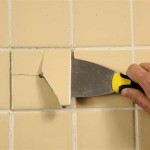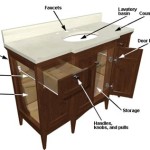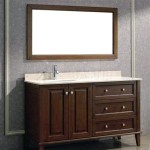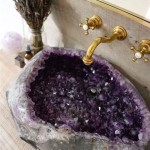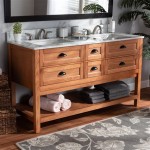Unraveling the Mystery of Yellow Sticky Stuff on Bathroom Walls
Discovering a yellow, sticky residue on bathroom walls can be unsettling. This perplexing substance can range from barely noticeable film to thick, gummy patches. Understanding the potential causes, effective cleaning methods, and preventative measures can help maintain a clean and healthy bathroom environment.
Potential Culprits Behind the Yellow Sticky Film
Several factors can contribute to the formation of yellow sticky residue on bathroom walls. Identifying the source is crucial for effective removal and prevention.
1. Soap Residue and Hard Water: The combination of soap residue and hard water minerals can create a sticky, yellowish film. This is particularly common in shower areas and around sinks.
2. Hairspray and Other Aerosols: Hairspray, deodorant, and other aerosol products can leave a sticky residue that attracts dust and grime, eventually turning yellow.
3. Body Oils and Lotions: Body oils, lotions, and cosmetics can adhere to bathroom surfaces and contribute to the buildup of sticky residue.
4. Mold and Mildew: In humid environments, mold and mildew can thrive, producing a sticky, yellowish or brownish film. This is often accompanied by a musty odor.
5. Nicotine Residue: In households where smoking occurs, nicotine residue can settle on surfaces, creating a sticky, yellow-brown film.
6. Cooking Grease: Airborne grease from cooking can settle on bathroom surfaces, particularly in homes with combined kitchen and bathroom ventilation.
7. Cleaning Product Residue: Ironically, some cleaning products can leave behind a sticky residue if not rinsed thoroughly.
Effective Cleaning Methods for Yellow Sticky Residue
Once the likely source of the yellow sticky substance has been identified, appropriate cleaning methods can be employed. Always test cleaning solutions on an inconspicuous area first to ensure compatibility with the wall surface.
Tackling Soap Scum and Hard Water Deposits
1. Vinegar Solution: White vinegar is an effective natural cleaner for soap scum and hard water deposits. Mix equal parts water and vinegar in a spray bottle, apply to the affected area, let it sit for a few minutes, and then scrub with a sponge or cloth.
2. Baking Soda Paste: Create a paste by mixing baking soda with a small amount of water. Apply the paste to the sticky residue, let it sit for a few minutes, and then scrub gently. Baking soda's mild abrasive properties can help lift stubborn deposits.
3. Commercial Cleaners: Various commercial bathroom cleaners are specifically formulated to dissolve soap scum and hard water stains. Follow the manufacturer's instructions carefully.
Removing Aerosol Residue, Body Oils, and Grease
1. All-Purpose Cleaner: A mild all-purpose cleaner can often effectively remove aerosol residue, body oils, and grease. Spray the affected area, let it sit for a few minutes, and then wipe clean.
2. Rubbing Alcohol: Isopropyl alcohol can be effective for dissolving sticky residues. Apply a small amount to a cloth and gently rub the affected area.
Eliminating Mold and Mildew
1. Bleach Solution: A diluted bleach solution (1 part bleach to 10 parts water) can effectively kill mold and mildew. Apply the solution to the affected area, let it sit for a few minutes, and then rinse thoroughly. Always ensure proper ventilation when using bleach.
2. Commercial Mold and Mildew Removers: Several commercial products are specifically designed to eliminate mold and mildew. Follow the manufacturer's instructions.
Preventing Yellow Sticky Residue Buildup
Prevention is key to maintaining a clean and hygienic bathroom. Implementing these preventative measures can minimize the recurrence of yellow sticky residue.
1. Regular Cleaning: Wipe down bathroom surfaces regularly with a damp cloth or sponge to prevent the buildup of soap scum, body oils, and other residues.
2. Proper Ventilation: Ensure adequate ventilation by running the bathroom fan during and after showers to reduce humidity and prevent mold growth.
3. Squeegee Shower Walls: Squeegeeing shower walls and doors after each use can significantly reduce the accumulation of soap scum and hard water deposits.
4. Avoid Smoking Indoors: Eliminate indoor smoking to prevent nicotine residue from settling on surfaces.
5. Use Exhaust Fan While Cooking: Utilize the kitchen exhaust fan while cooking to minimize the spread of airborne grease.
6. Rinse Surfaces Thoroughly: After cleaning, rinse all surfaces thoroughly to remove any cleaning product residue.
By understanding the potential causes, implementing effective cleaning strategies, and adopting preventative measures, maintaining a clean and residue-free bathroom is achievable.

Why Are My Bathroom Walls Sticky Just Add Paint

Yellow Oily Drops Bleeding Through Walls Doityourself Com Community Forums

How To Clean Yellow Drips On Bathroom Walls Diy 5 Methods

How To Fix Yellow Drips On Walls And Ceilings

Sticky Humidity On Bathroom Walls Hometalk

Sticky Humidity On Bathroom Walls Hometalk

Yellow Sticky Stuff On The Wall And Fresh Caulk Implying A Fixed Toilet But It Constantly Ran Picture Of Edinburgh Grosvenor Hotel Tripadvisor

Why Are There Yellow Stains On My Bathroom Ceiling 3 Main Reasons Calahan Bath Kitchen And Sunrooms

What Is Yellow Mold How To Identify Remove

Sticky Humidity On Bathroom Walls Hometalk

